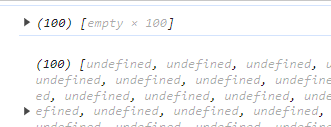JavaScript – 冷知识 (新手)
当 charAt 遇上 Emoji
参考: stackoverflow – How to get first character of string?
我们经常会用 charAt(0) 来获取 first character. 这个用在 ASCII 是完全没有问题的. 但是如果遇到 Unicode 的话, 很有可能会翻车.
const text = '👍'; console.log(text.charAt(0)); console.log(Array.from(text)[0]);
效果

所以当遇上 Unicode 的话记得改用 Array.from 哦.
当 flatMap 遇上 not array
const values = [[1, 2, 3], [4, 5, 6]].flatMap(v => v); // [1,2,3,4,5,6]
flatMap 的功能是打平 array, 但如果里面有一个不是 array 呢?
const values = [[1, 2, 3], [4, 5, 6], 'not array'].flatMap(v => v); // [1,2,3,4,5,6, 'not array']
它会原封不动的返回.
那如果是一个 iterator 呢? 它会不会聪明的当 array 处理?
function* generator() { yield 1; yield 2; yield 3; } const iterator = generator(); const values = [[1, 2, 3], [4, 5, 6], iterator].flatMap(v => v); // [1,2,3,4,5,6,iterator] console.log(values[values.length - 1] === iterator); // true
是不会的哦.
encodeURI 和 encodeURIComponent 的区别
参考: 知乎 – escape,encodeURI,encodeURIComponent有什么区别?
encodeURI 不会对 ~!@#$&*()=:/,;?+' 进行编码
encodeURIComponent 方法不会对 ~!*()' 进行编码
用法
如果我们想 encode "full URI" 那就用 encodeURI.
比如
encodeURI('https://www.stooges.com.my/a b'); // https://www.stooges.com.my/a%20b encodeURIComponent('https://www.stooges.com.my/a b') // https%3A%2F%2Fwww.stooges.com.my%2Fa%20b
encodeURI 编码后的 value 依然是一个 URI, 但 encodeURIComponent 就完全不是了.
encodeURIComponent 的 Component 指的是组件. 也就是 part of the URI.
顾名思义, 它的用法就是针对某一个区域做 encode.
const example1 = `https://www.stooges.com.my/${encodeURIComponent('a b')}`; // https://www.stooges.com.my/a%20b const example2 = `https://www.stooges.com.my?key=${encodeURIComponent('ok?')}`; // https://www.stooges.com.my?key=ok%3F
都是 encode 整个 URI 里的某一部分.
new Array(10) vs Array.from({ length: 10 })
如果想创建一个 array 数字从 1 到 100,通常代码是这样的
const numbers = new Array(100).fill(undefined).map((_, i) => i + 1);
今天看到 Angular Material 的例子使用了另一个方式
const numbers = Array.from({ length: 100 }).map((_, i) => i + 1);
好奇的我,测试了一下速度
const start2 = performance.now(); const array2 = Array.from({ length: 10000000 }); const end2 = performance.now(); console.log(end2 - start2); // 4xx - 5xx ms const start = performance.now(); const array = new Array(10000000).fill(undefined); const end = performance.now(); console.log(end - start); // < 100 ms
显然 Angular Material 的方式慢了好几倍。
不清楚为什么它使用慢的,我猜是因为
Array.from({ length: 100 })
比
new Array(100).fill(undefined)
美观。
Array.from 会直接得到 100 个 undefined,然后通过 map 就可以创建出 1 -100 了。
new Array 会得到 100 个 empty value,empty value 和 undefined 是有区别的。
如果你去拿一个 empty value 你会得到 undefined
const array = new Array(100); console.log(array[5]); // undefined
这会让我们以为 empty value 就是 undefined,但其实不是。
const array = new Array(100); console.log(array); console.log(array.fill(undefined));
效果

empty 最大的伤害是 map 方法会 skip 掉 empty value
const array = new Array(100); array[30] = 'x'; console.log(array.map(v => 'a'));
效果

只有 index 30 的 value 被 map 成了 'a',其余的依然是 empty value。
也就是这个原因导致了使用 new Array 实现 1-100 必须加一句 .fill(undefined)。




